| 2 May |
• yesterday • tomorrow |
| Memorial of Saint Athanasius, Bishop and Doctor of the Church |
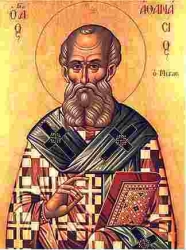
• Athanasius of Egypt
• Athanasius the Great
• Champion of Christ's Divinity
• Champion of Orthodoxy
• Father of Orthodoxy
• Greek Doctor of the Church
• Holy Hierarch
• Pillar of the Church
Studied the classics and theology in Alexandria, Egypt. Deacon, secretary, and student of bishop Alexander of Alexandria. Attended the Council of Nicea in 325 where he fought for the defeat of Arianism and acceptance of the divinity of Jesus. Formulated the doctrine of homo-ousianism which says that Christ is the same substance as the Father; Arianism taught that Christ was different from and a creation of the Father, a creature and not part of God. Bishop of Alexandria c.328; he served for 46 years. When the dispute over Arianism spilled over from theology to politics, Athanasius got exiled five times, spending more than a third of his episcopate in exile. Biographer of Saint Anthony the Abbot and Saint Potamon of Heraclea. Confessor of the faith and Doctor of the Church, he fought for the acceptance of the Nicene Creed.
c.295 at Alexandria, Egypt
• 2 May 373 at Alexandria, Egypt of natural causes
• relics in San Croce, Venice, Italy
• bishop arguing with a pagan
• bishop holding an open book
• bishop standing over a defeated heretic
Saint Athanasius, the Father of Orthodoxy, by Mother Frances Alice Monica Forbes (download in EPub format)
For the Son of God became man so that we might become God. - Saint Athanasius
You will not see anyone who is really striving after his advancement who is not given to spiritual reading. And as to him who neglects it, the fact will soon be observed by his progress. - Saint Athanasius
The Word of God, incorporeal, incorruptible, and immaterial, entered our world. Out of his loving-kindness for us he came to us, and we see this in the way he revealed himself openly to us. Taking pity on mankind's weakness, and moved by our corruption, he could not stand aside and see death have the mastery over us. He did not want creation to perish and his Father's work in fashioning man to be in vain. He therefore took to himself a body, no different from our own, for he did not wish simply to be in a body or only to be seen. By dying for others, he immediately banished death for all mankind. The corruption of death no longer holds any power over mankind, thanks to the Word, who has come to dwell among us through his one body. - from a talk by Saint Athanaius
Mary, Mother of Grace, it becomes you to be mindful of us, as you stand near him who granted you all graces, for you are the Mother of God and our Queen. Help us for the sake of the King, the Lord God and Master who was born of you. For this reason, you are called full of grace. Remember us, most holy Virgin, and bestow on us gifts from the riches of your graces, Virgin full of graces. - Saint Athanasius
https://catholicsaints.info/saint-athanasius-of-alexandria/
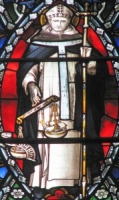
• Antoninus
• People's Prelate
• Protector of the Poor
2 May in Florence, Italy
When he first tried to join the Dominicans he was refused due to his poor health. When he persisted, the prior told him he could only enter if he could recite the whole of canon law from memory; a year later, in 1405, after spending his time in study, he recited it and was admitted. Priest. Worked for the reforms of Blessed John Dominic. Vicar of the convent of Foligno, Italy in 1414. Prior. Member of the Council of Florence which sought to end the schism between the churches of the east and west. Vicar-General of the Dominicans. Archbishop of Florence, Italy in 1446. Diplomat. Theologian. Healer. Wrote a biography of Blessed John Dominic, a history of the world, and a reference work on moral theology.
1 March 1389 at Florence, Italy
2 May 1459 at Florence, Italy
31 May 1523 by Pope Adrian VI
against fever
• lily
• pair of scales in which he weighs false merchandise against God's word
• scales
• wearing bishop's mitre, holding the cross, and giving the sign of blessing in absolution
https://catholicsaints.info/saint-antonius-of-florence/

Apostle of Madrid
One of twelve children born to a farm family; six of his siblings died in childhood. Educated in Almería, Spain. Entered the diocesan seminary in 1876, and the Granada seminary in 1878. Ordained on 24 September 1887.
Parish priest in Chinchón and Estremera. For nearly 20 years he cared for an elderly brother priest. Synodal examiner in Madrid, Spain in 1890. Taught metaphysics, Latin, and pastoral theology at the Madrid seminary. Chaplain to the convent of Saint Bernard. Pilgrim to the Holy Land in 1905. Entered the Jesuit noviate in Granada in 1906, and made his religious profession on 12 October 1908.
Noted and sought after counselor and confessor, known for his parish ministry, spiritual direction, his devotion to the poor, and his excellent preaching that brought many to the faith. He served as spiritual director for groups of lay people, and from behind the scenes he helped them start academic and trade schools, find work for the unemployed, and minister to the sick and disabled. He organized missions and spiritual exercises, and worked to bring better financial and spiritual life to the poorest of the city.
22 July 1864 in Dalías, Spain
2 May 1929 in Aranjuez, Spain of natural causes
4 May 2003 by Pope John Paul II
https://catholicsaints.info/saint-jose-maria-rubio-y-peralta/

A lifelong lay woman in the diocese of Rimini, Italy, she was the daughter of Giuseppi and Agnese Bonin Sabattini and had one brother. A pious girl, Alessandra made her First Communion on 3 May 1970, was Confirmed on 16 April 1972, and joined the Associazione Comunita Papal Giovanni XXIII (Pope John XXIII Community) at the age of 12.
She studied medicine with a plan to work with missionaries in Africa, and was engaged to a man named Guido. Alessandra spent her free time working with the poor, being consumed by the beatitude, ‘Blessed are the poor, the kingdom of Heaven is theirs’, volunteering in drug rehabilitation centers, and living poorer than the people she helped. She died from being struck by a motor vehicle and spending three days in a coma, and her Cause for Canonization presents her as a model for living heroic Christian virtues in a normal, working life.
19 August 1961 in Riccione, Italy
2 May 1984 in Bologna, Italy of head injuries sustained when hit by a motor vehicle on 29 April 1984
• 14 June 2020 by Pope Francis
• beatification recognition celebrated at the Cathedral of San Francesco in Rimini, Italy, celebrated by Cardinal Giovanni Angelo Becciu
https://catholicsaints.info/blessed-alessandra-sabattini/

Guiborat, Viborada, Weibrath
Born to the Swabian nobility. Her brother, Hatto, was a priest and provost of Saint Magnus church. Wiborada turned her home into a hospital for the sick poor people that her brother brought to her. Pilgrim to Rome, Italy. Benedictine nun at Saint Gall's monastery, where she worked as a bookbinder.
Subject of virulent criticism, she eventually withdrew further from the world, becoming an anchoress first near Saint Gall's, then near her brother's church. Noted for her austerity, and a gift of prophecy, she drew many visitors and would-be students. One of her prophecies involved the Hungarian invasion of her region; her warning allowed the priests and religious of Saint Gall and Saint Magnus to escape, but Wiborada refused to leave her hermit's cell and was found by the invaders. Martyr.
9th century at Klingna, Aargau, Switzerland
axed to death in 926
• 1047 by Pope Clement II
• first woman formally canonized by the Vatican
• axe
• book
• Benedictine nun holding a book and axe
https://catholicsaints.info/saint-wiborada-of-gall/
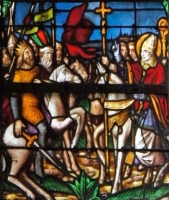
Alpine, Alpinus
Lord of Baye, France. Studied at the abbey of Lérins, France. Worked with Saint Germanus of Auxerre and Saint Lupus of Troyes to fight the Pelagian heresy. Negotiated with Attila the Hun, and saved the city of Châlons, France from being sacked. Travelling evangelist, he founded several churches, hospices, convents and monasteries, brought many to the faith, and many to join monastic orders. Bishop of Châlons, France from 433 to 480, serving for 47 years.
• 7 September 480 in Baye, France of natural causes
• relics re-interred at the church of Saint Andrew in Châlons, France in 860 by Bishop Erchanraus; the church was later renamed Saint Alpin
• some relics enshrined in the cathedral of Châlons and in other locations around the region
• some relics lost and reliquaries stolen during the anti-Christian excesses of the French Revolution; surviving relics were stored in the cathedral of Châlons
https://catholicsaints.info/saint-alpin-de-chalons/
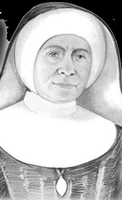
Sister Maria Acutina
A member of the Sisters of Saint Elizabeth, joining in 1905 at age 23, and making her perpetual profession on 25 July 1916. She served as an assistant to the parish priest in Nysa, Poland, in the hydrotherapy sanatorium in Wlen, Poland, and in the orphanage in Lubiaz, Poland. Near the end of World War II, when the Soviet Red Army entered Lubiaz, Blessed Helena took all the girls from the orphanage and escaped with them to Krzydlina Wielka, Poland. When the Red Army entered that city, they found the girls. Sister Maria tried to hold them off but was killed by the soldiers. Martyr.
6 July 1882 in Dluzek, Nowy Targ, Poland
• shot on 2 May 1945 in Krzydlina Wielka, Wolów, Poland
• buried in a tomb with Sister Anna Richter in Krzydlina Wielka
19 June 2021 by Pope Francis (decree of martyrdom)
https://catholicsaints.info/blessed-helena-goldberg/
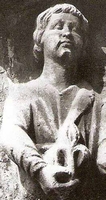
Fifth century bishop in north Africa. Leader of a Council called to express clear defense of the Catholic faith during a period of pagan resurgence and Arian heresy. Envoy from the Council to emperor Honorius and emperor Theodosius. Exiled to the Mediterranean island of Corsica in 484 in the purges and persecutions of the Arian King Hunneric. Martyr.
• beheaded in 485 on Corsica
• relics brought to Italy by Bishop Titian of Treviso c.743 to prevent their destruction by Saracen invaders
• Bishop Titian interred the relics in the church of Saint John in an area that is still used as a baptistery
• relics re-interred in the crypt of the cathedral of Treviso, Italy c.1025 by Bishop Rotari
• relics enshrined in glass containers near the altar of Blessed Henry of Bolzano in the cathedral of Treviso
https://catholicsaints.info/saint-fiorenzo-of-algeria/
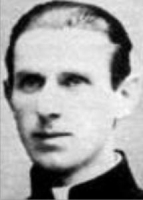
• Boleslaw Strzelecki
• Saint Francis of Radom
Parish priest in the diocese of Radom, Poland. His devotion to God and his fellow man led to his parishioners giving him the nickname Saint Francis of Radom. Arrested in January 1941 as part of the Nazi persecution of the Church, and sent to the concentration camp at Auschwitz, Poland where he died four months later from general abuse and mistreatment. He spent his time there ministering to other prisoners. One of the 108 Polish martyrs of World War II.
10 June 1896 in Poniemon, Podlaskie, Poland
2 May 1941 in Oswiecim (Auschwitz), Malopolskie, Poland
13 June 1999 by Pope John Paul II in Warsaw, Poland
https://catholicsaints.info/blessed-boleslas-strzelecki/
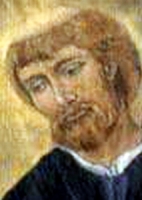
• Guglielmo Tirry
• Liam Tuiridh
• William Tirrey
Son of John and Joan Tirry. Studied in Valladolid, Spain and Paris, France. Augustinian priest. He returned to Ireland in 1630, and worked many years as secretary for his uncle, the bishop of Cork. In 1654 he was assigned to Fethard, Tipperary. Arrested on Holy Saturday, 25 March 1654, and condemned to death for his crime of being a priest. One of the Irish Martyrs.
1608 in Cork, Ireland
hanged on 2 May 1654 in Clonmel, Ireland
27 September 1992 by Pope John Paul II in Rome, Italy
https://catholicsaints.info/blessed-william-tirry/
Married to Saint Exsuperius. Mother of Saint Cyriacus and Saint Theodulus. Slave, owned by a rich devout worshipper of the ancient Roman gods in Attalia, Pamphylia. Zoe's job was to tend the house dogs and prevent them from biting visitors, and she rarely saw her husband as he worked the fields far from the house. Since she worked near a roadway, she gave of her own meagre rations to those even poorer than herself. One pagan feast day, the family of slave saints was given meat to sacrifice to an idol. They refused, and the entire family was tortured and murdered.
burned to death c.127
https://catholicsaints.info/saint-zoe-of-pamphylia/
Giuse Nguyen Van Luu
Lay man farmer and catechist in the apostolic vicariate of West Cochinchina. Imprisoned when he tried to take the place of a hunted priest during the persecutions of Emperor Tu-Duc. Martyr.
c.1790 at Cái Nhum, Vinh Long, Vietnam
2 May 1854 in prison at Vinh Long, Vietnam of injuries received while being tortured
19 June 1988 by Pope John Paul II
https://catholicsaints.info/saint-joseph-luu/
Exuperius, Hesperus
Married to Saint Zoe. Father of Saint Cyriacus and Saint Theodulus. Slave, owned by a rich devout worshipper of the ancient Roman gods in Attalia, Pamphylia. Field worker. One pagan feast day, the family of slave saints was given meat to sacrifice to an idol. They refused, and the entire family was tortured and martyred.
burned to death c.127
https://catholicsaints.info/saint-exsuperius-of-pamphylia/
Celtic hermit who moved to an isolated site in Cornwall, England where his holiness soon attracted the attention of the locals. He taught them Christianity and baptized them into the faith. The water source he used for baptism became one of the many holy wells that dot the region and serve as points of pilgrimage. A church built on the site in the 10th century was dedicated to his memory, which had been preserved by the locals.
https://catholicsaints.info/saint-gennys-of-cornwall/
Born to the nobility, a member of the royal house of Seldenbüren. Founded and endowed Engelberg Abbey at Unterwalden, Switzerland. Benedictine lay-brother at Engelberg. Considered a martyr because he was killed on a trip to Zurich to defend the rights of the abbey.
c.1070
murdered in 1126 at Zürich, Switzerland
https://catholicsaints.info/blessed-conrad-of-seldenburen/
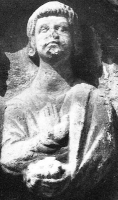
Vendemiale, Vindemial
Bishop of Gafsa, Nicomedia (in modern Turkey) who stayed loyal to orthodox Christianity and opposed Arianism. Tortured and martyred by order of the Arian Vandal king Hunneric.
beheaded c.485
https://catholicsaints.info/saint-vindemialis-of-africa/
Son of Saint Exsuperius and Saint Zoe; brother of Saint Cyriacus. Slave, owned by a rich devout worshipper of the ancient Roman gods in Attalia, Pamphylia. One pagan feast day, the family of slave saints was given meat to sacrifice to an idol. They refused, and the entire family was tortured and martyred.
burned to death c.127
https://catholicsaints.info/saint-theodulus-of-pamphylia/
Son of Saint Exsuperius and Saint Zoe; brother of Saint Theodulus. Slave, owned by a rich devout worshipper of the ancient Roman gods in Attalia, Pamphylia. One pagan feast day, this family of slave saints was given meat to sacrifice to an idol. They refused, and the entire family was tortured and martyred.
burned to death c.127
https://catholicsaints.info/saint-cyriacus-of-pamphylia/
Brother of Saint Fursey of Péronne and Saint Foillan of Fosses. Fellow monk with them at Burgh Castle near Yarmouth, England. Missionary to Belgium where he served as a priest in the convent of Nivelles and worked with Saint Gertrude. Abbot at Fosses, Belgium. Abbot at Péronne, France.
Ireland
7th century
https://catholicsaints.info/saint-ultan-of-peronne/
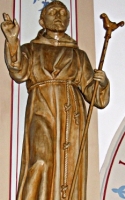
Gaubert, Valbert, Valdeberto, Vaubert, Walbert, Waldebertus
Monk. Abott of Luxeuil Abbey c.628. Worked with Saint Salaberga to found the convent of Saint John the Baptist in Laon, France.
c.668
https://catholicsaints.info/saint-waldebert-of-luxeuil/

• Germanus the Scot
• Germaine...
Convert, brought to the faith by Saint Germanus of Auxerre, in whose honour he took the name Germanus. Bishop. Martyr.
c.460 at Normandy, France
https://catholicsaints.info/saint-germanus-of-normandy/
Clivis, Glywys
Brother of Saint Cadoc of Llancarfan; may have been the nephew of Saint Petroc. Monk. Sent to Cornwall by Cadoc, he founded the monastery and parish now know as Saint Glywys. May have been martyred; records are unclear.
6th century
https://catholicsaints.info/saint-gluvias/
Eugenia
Bishop in north Africa who stayed loyal to orthodox Christianity and opposed Arianism. Tortured and martyred by order of the Arian Vandal king Hunneric.
martyred c.485
https://catholicsaints.info/saint-eugenius-of-africa/
Martyr. No details have survived.
• beheaded on Sardinia
• buried in the church of San Sperate
• relics enshrined in the cathedral in Cagliari, Sardinia in 1616
https://catholicsaints.info/saint-guisitano-of-sardinia/
Bishop of Tlemcen, Mauritania who stayed loyal to orthodox Christianity and opposed Arianism. Tortured and martyred by order of the Arian Vandal king Hunneric.
beheaded c.485
https://catholicsaints.info/saint-longinus-of-africa/
• Neachtain of Fennor
• Neachtan of...
• Nectan of...
A relative of Saint Patrick. Present at Patrick's death.
5th century
https://catholicsaints.info/saint-neachtain/
Benedictine monk at the abbey of Sithiu, France. Spiritual student of Saint Bertin the Great.
c.699 of natural causes
https://catholicsaints.info/saint-bertinus-the-younger/
Mercedarian who freed 99 Christians from slavery in Muslim Numidia.
15th century of natural causes
https://catholicsaints.info/blessed-juan-de-verdegallo/
Commander of the Mercedarian convent of Saint Eulalia in Seville, Spain.
1440
https://catholicsaints.info/blessed-bernard-of-seville/
Monk. Abbot of Erard, in the ancient kingdom of Ui-Drona (in modern County Carlow, Ireland).
https://catholicsaints.info/saint-fiachra-of-erard/
Deacon. Martyr.
Seville, Spain
https://catholicsaints.info/saint-felix-of-seville/
A group of Christians marytred together in the persecutions of Diocletian. We know little more than their names - Celestine, Germanus, Neopolus and Saturninus.
304 in Alexandria, Egypt
• Nicholas Hermansson
CatholicSaints.Info Portable Edition